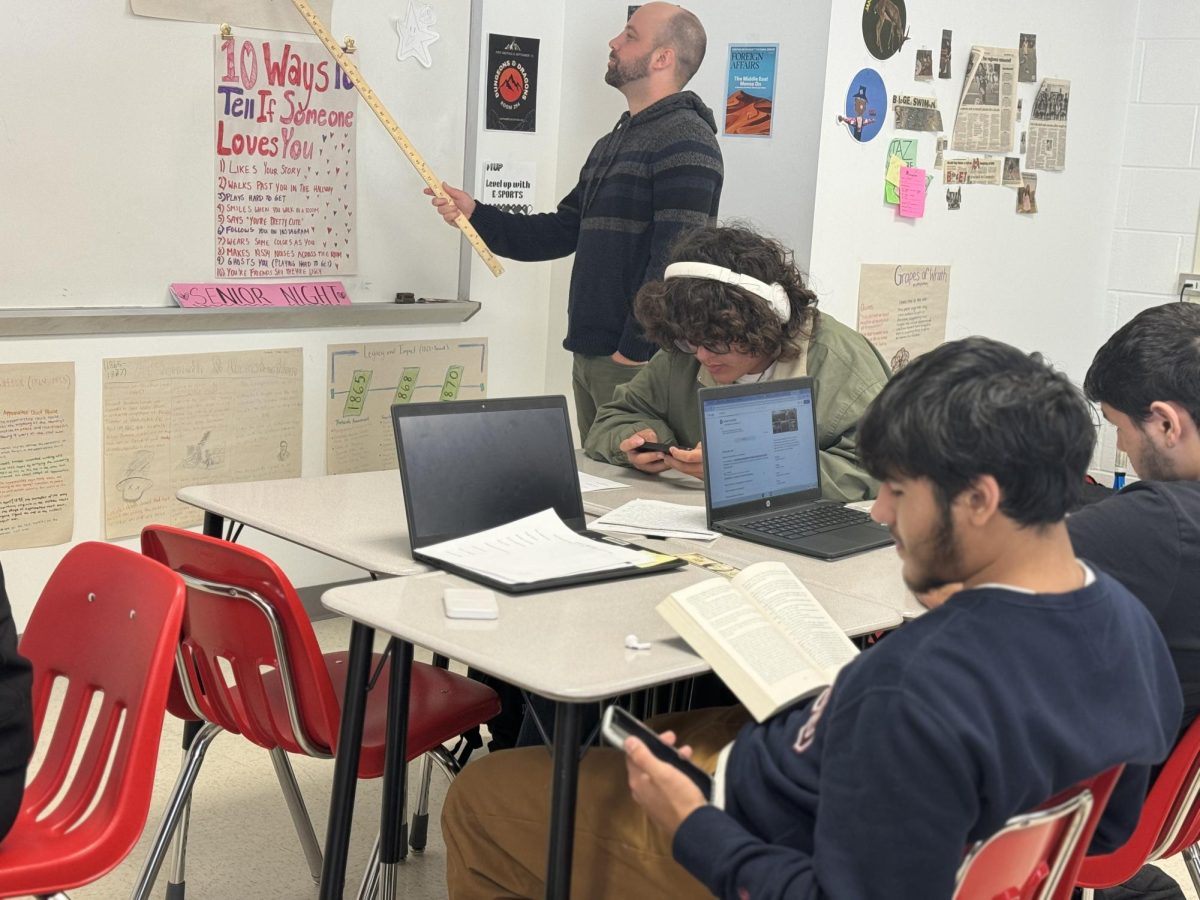While bills, bank statements, rent, electricity, water and gas may seem like primarily adult concerns, they are issues that many AHS students worry about daily. Several students, due to unfortunate familial circumstances, are being forced to grow up somewhat sooner, and deal with issues like poverty and homelessness during these tough economic times.
47 percent of the AHS student population is on free or reduced-price lunch, a federally assisted meal program for students who cannot afford school lunches. Last year, the number was at 41 percent, showing a significant increase in the number of students that are living in lower socioeconomic conditions.
Students from such socioeconomic backgrounds face more obstacles that can hinder their success at school. “It does get very hard to focus in school, especially when you have issues like bills, heating and food for the family at the back of your mind,” said guidance counselor Linda Wheeler. “Especially with the recession, there have been increased concerns with families living in low socioeconomic conditions—more parents that have been laid off, losing their homes, etc. So, many students have been forced to move in with extended family or friends,” she said.
The home atmosphere directly affects school performance, school authorities say.
“Often, their attendance is very inconsistent, and they might even consider dropping out due to their circumstances at home,” said Dean of Students, Hassan Mims.
“Many students may also display an attitude or aggression—if they are being forced to live miserable conditions at home, these pressures comes out when they’re in school,” he said.
“When you have to worry about basic needs, you tend to get more stressed. I have seen kids who are worried about their parents, finances, etc. For many, it is the first time that financial matters are being discussed openly at home; for others, it is the general stress of making ends meet,” said Gale Grindstaff, the social worker for AHS.
Homeless and independent students also face similar challenges at school and away from “home.”
“When they come to [homeless shelters], we encourage them to continue their education,” said Chris Bramante, the Volunteer Coordinator at New Hope Housing. This is a housing community in Alexandria that provides temporary homes for homeless families. “But it may take years for people to get to the education level that will enable them to find a job that will pay enough to live in today’s economy,” he said.
Shelter life can also pose several challenges to students.
“When teens are at the shelter with their parents, the entire family is living in one room. They cannot have overnight visitors; they have a 9:00 p.m. curfew. Often, they have changed schools numerous times, which makes it difficult to participate in activities, to make and keep friends, and to do well academically,” said Bramante.
Mental stress is also part of this concern. “Mental illness affects employability, relationships and every aspect of an individual’s life. Even those with appropriate medication and therapy may require lifelong support (supportive housing, supportive employment),” said Bramante.
But most importantly, the poverty of homelessness takes away from the child’s chance for a normal lifestyle. “All kids would want the cell phones, the iPods, the laptops, the clothes, the shoes, etc., that every other teen wants and has,” said Bramante.
Often, the students share their parents’ stress of being unable to provide for their families. “Many kids are taking on jobs, trying to contribute to the family’s overall income,” said Grindstaff. “The issue with that becomes managing school, grades, extra-curriculars and then an additional job. It’s a really tough balance,” she said.
Fortunately, the FCPS and Annandale community have been very helpful in making sure students’ basic needs remains affordable and accessible.
“FCPS aims to make sure that the parents’ financial situation does not, in any way, affect the child’s education,” said Steve Sengstack, the AHS Director of Student Services. “We have a successful team of professionals in this very building that can lead these students and their families in the right direction,” he said.
“Compassion in the Annandale community is also a huge factor—any help really does make a difference. The parent’s network here is very advanced, and we are able to provide our students with a variety of services—both monetary and material support,” said Grindstaff.
The northern Virginia region also has several non-profit organizations working to keep homeless and poverty-stricken youth off the streets and to lead their families to permanent housing. “[New Hope Housing] helps with expenses for school trips, summer camps and special trips, and a host of other resources for our teens,” said Bramante. Local charities and families are also very benevolent and help families in need by donating clothing, gift cards to local grocery stores, and other essential items.
The challenges they face do not always lead students from low socioeconomic backgrounds to be less successful than their wealthier counterparts. “Many students who face these situations every day are completely motivated due to their surroundings—they realize that education is key to getting them out of this situation, and they are ready to work hard to get out of it,” said Mims.
“They’re very supportive of their parents, they’re concerned about others, and are more than happy to help themselves and others,” said Sengstack.
“The fact that some of these children still get here and want to learn, I think, is phenomenal,” said Grindstaff.
Since these issues are mainly confidential, and students do not like to admit their socio-economic situation to other people, many students are not aware of what resources they could be accessing to help their situation. “I think all the students out there need to realize that they’re not alone—many students may or may not know about all the resources out there,” said Grindstaff. “Many families, especially with immigrant families, may come here with extensive dreams about their futures. But then the true expensiveness of the area hits them, and they realize it is more than they can handle. But we’re here to help—it’s our job,” she said.
But, despite the adversities they are forced to face everyday, AHS students and families are definitely much more resilient and willing to endure rough times. “I see kids everyday who are very much motivated by their condition to keep up their grades, even under very adverse circumstances,” said Wheeler. Assisted by community organizations and local groups, these students are surrounded by resources to keep them in school and pull them out of these situations.
In the words of Gale Grindstaff, “I have not seen this sense of community anywhere else—it’s really quite something.”





